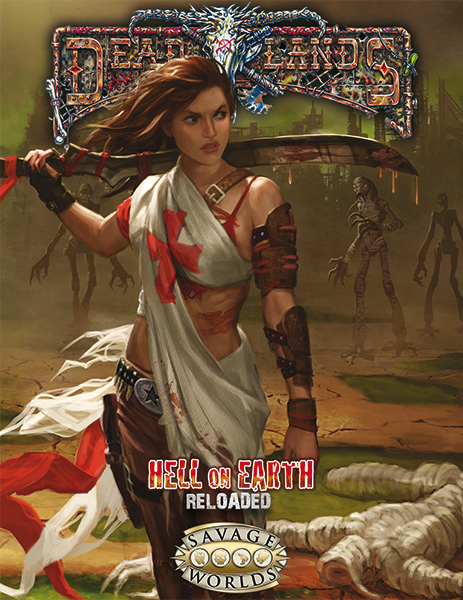This is the first plot point campaign published for Hell on Earth Reloaded. It was released in 2015. The short version: It's really good, shows the potential of the setting post-Reckoners, and has me wanting to see more.
This one is centered around Junkyard and the Iron Alliance. It begins with efforts to recover from the big battle at the end of the previous edition of the game, then expands across the wasted west before coming back together with a direct threat to the city and bad news for humanity if the threat is not stopped. Denver, Raven, and the Rattlers/Wormlings are the main threats here.
The plot point itself has 9 "backbone" points. There's not a strong plot feel IMO until about #6, where 6-7-8-9 feel like they would run mainly sequentially. The first 5 though could be run in a different order and over a lengthy period of time if you wanted to. Now that's just the spine of the campaign and it takes up about half of the book - descriptions, maps, plot notes, NPC's.
Most of the second half of the book is 13 "Savage Tales" which are adventures that are not related directly to the plot but can be played in between the others. They range all over the west from Templar HQ in Boise to Seattle to the Mall of America to the swamps of Louisiana. Most of these are pretty interesting in their own right and given the quantity you could run a completely separate campaign just using them! Combined , if it takes one session for each one, that's 22 sessions of play in this one book. That's a great deal! Considering that's without adding anything of your own, it's a deal and sets up a zero-prep campaign that looks like a lot of fun.
Special Callout - one problem with a lot of plotted campaigns is that there's not a lot of discussion about what happens if the PC's fail. I've noticed this in everything from Pathfinder AP's to Shadowrun adventures to some of the adventures for other story-heavy games. This one has notes on exactly this kind of thing in most of the individual plot-points as well as an entire page discussing what happens if they fail in the finale. This was great and I'd love to see more of this kind of coverage in similar adventures.
What would make it better: Well, I don't see a whole lot wrong with this as-is.
- "More" is better of course so more Tales would have been nice but 22 is really enough that I cannot complain.
- There are cyborgs and librarians in some of the adventures so the Companion is a handy thing to have. This is fine with me but some might see it as a negative.
- Dr. Hellstromme shows up in one of the Savage Tales as a quest-giver and seems to me like a stressed party could start trying to bring him in to solve larger problems - like the one driving the big finale. I think the easiest solution is to use his adventure early before the main thrust of things becomes apparent and then have a good answer as to why he's not answering the phone when the party calls him for help later.
The Verdict:
As a player: this book is not for you. Let your GM get it. In fact, encourage them to do so.
As a GM:
- If you're already running a game and have a definite direction you want to go I'd rate this as "useful" as it's good to have drop in adventures on hand even if you're not going to run the main thread.
- If you are running a game and do not have a set concept for the future then I'd say this is a "get" as it gives you one idea of how things could go and has a lot of useful parts.
- If you are contemplating a new campaign of HOE RL but are not running yet then this becomes a must buy
So yes, I really like this campaign, as much as I like some of the best Pathfinder AP's.
It also makes me wonder what they will put together next (there have to be more, right?) and it also makes me consider pulling together a "Classic" campaign from the old books to set up a prequel to this game. My players never played through much of the old published adventure line, so it could be a lot of fun - something to ponder for now.

















